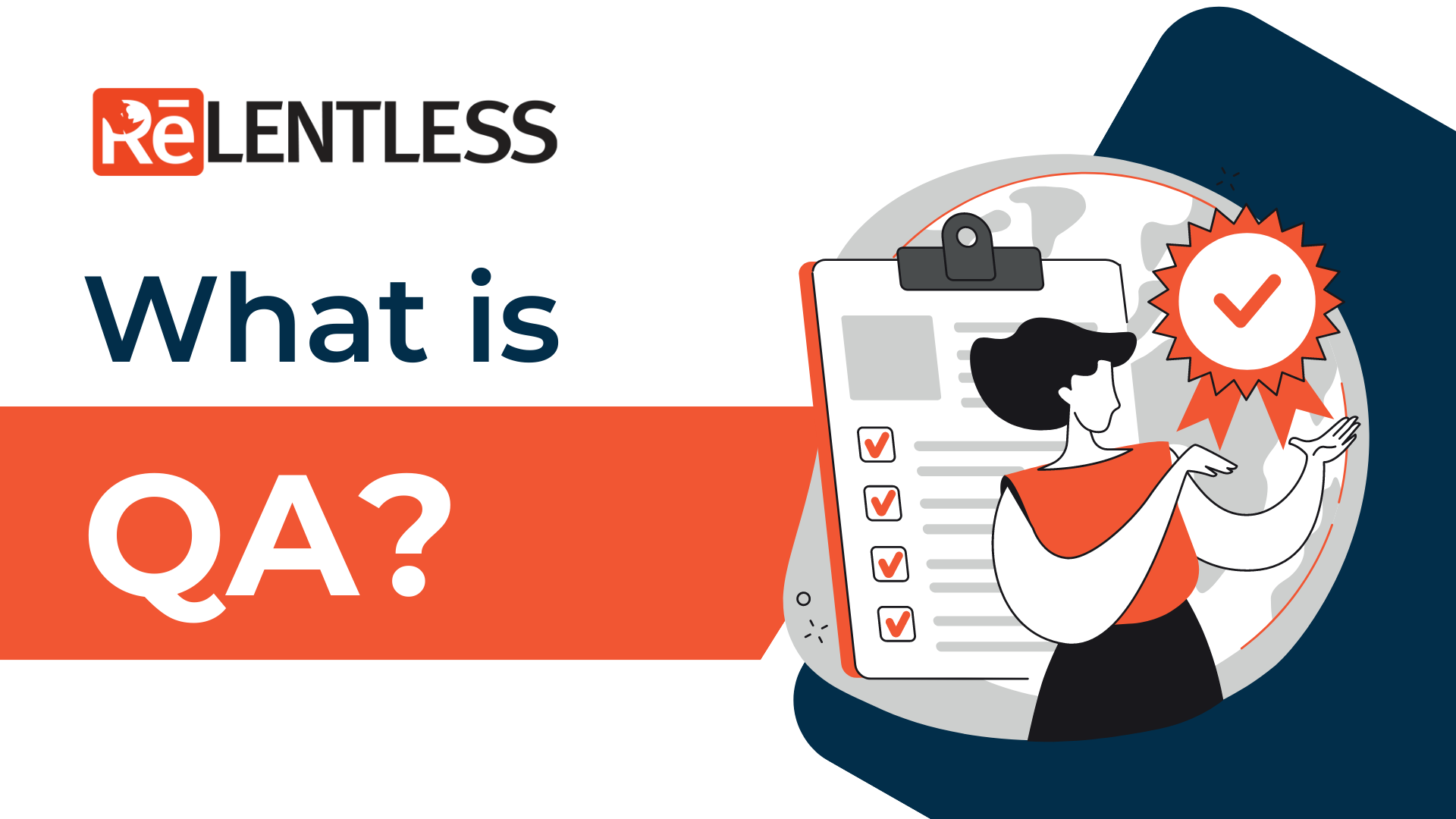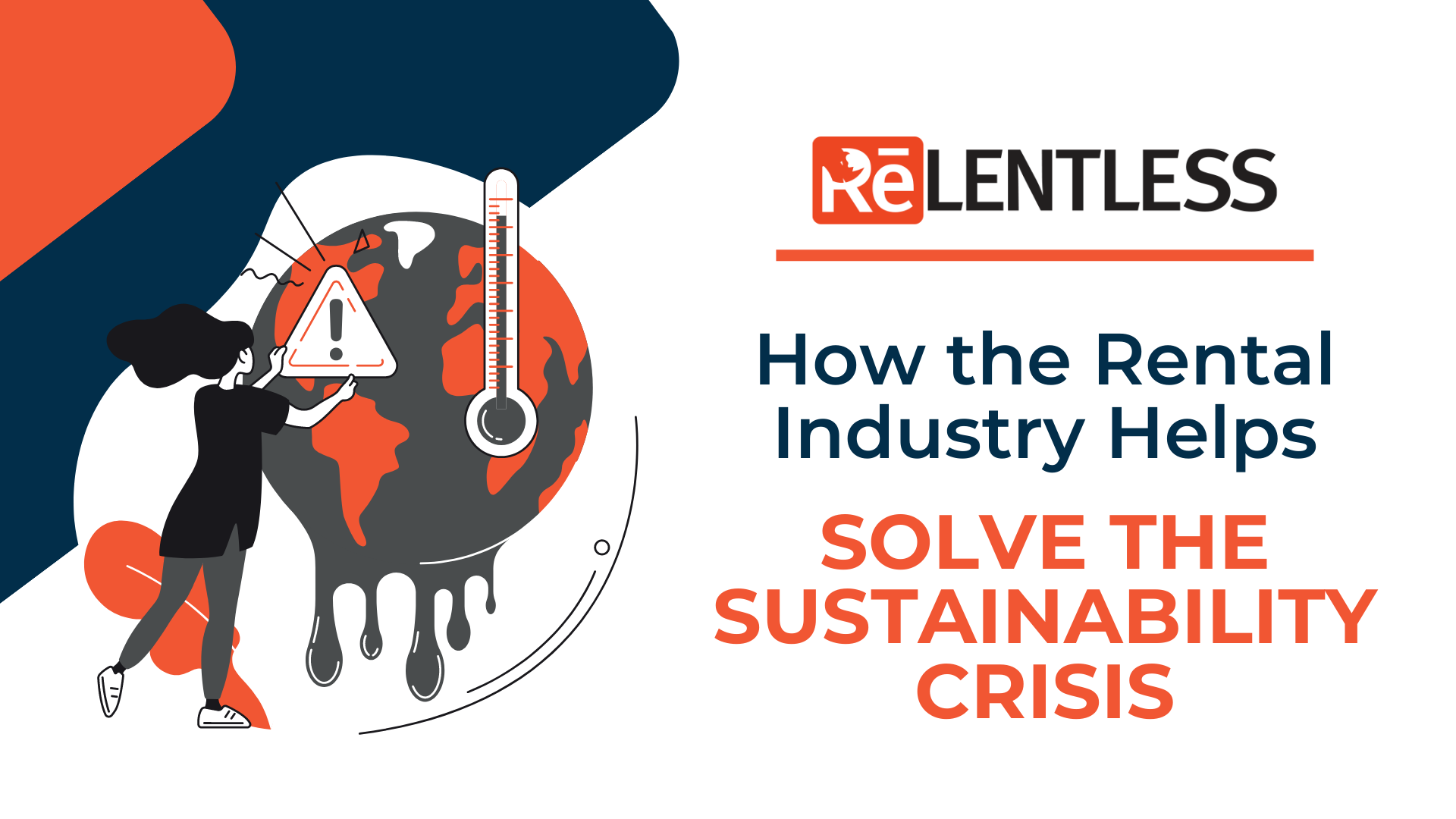Many ideas come to mind when thinking about quality, mainly depending on your business branch. Still, there is an underlying similarity – all products placed on the market must fulfill their usage purpose. Shovels must be able to dig the ground; firewalls must protect the digital content from virtual attacks.
“Quality Assurance” (QA) ensures your product fits its purpose and all background processes operate in order.

This article will explain where the term QA originates from and how it was adapted to the demands of rapid technological advancement and became a crucial step in developing digital content.
What is Quality and Quality Assurance?
Before stepping into the specifics of quality assurance, it is essential to understand product quality and the possible variations depending on the business branch and product demands.
Quality stands for regulated standards and norms for features assessed to be the most useful, purposeful, customer appealing, and traffic-creating. Statistically, it is a measurable feature of a variable that is considered to influence product quality.
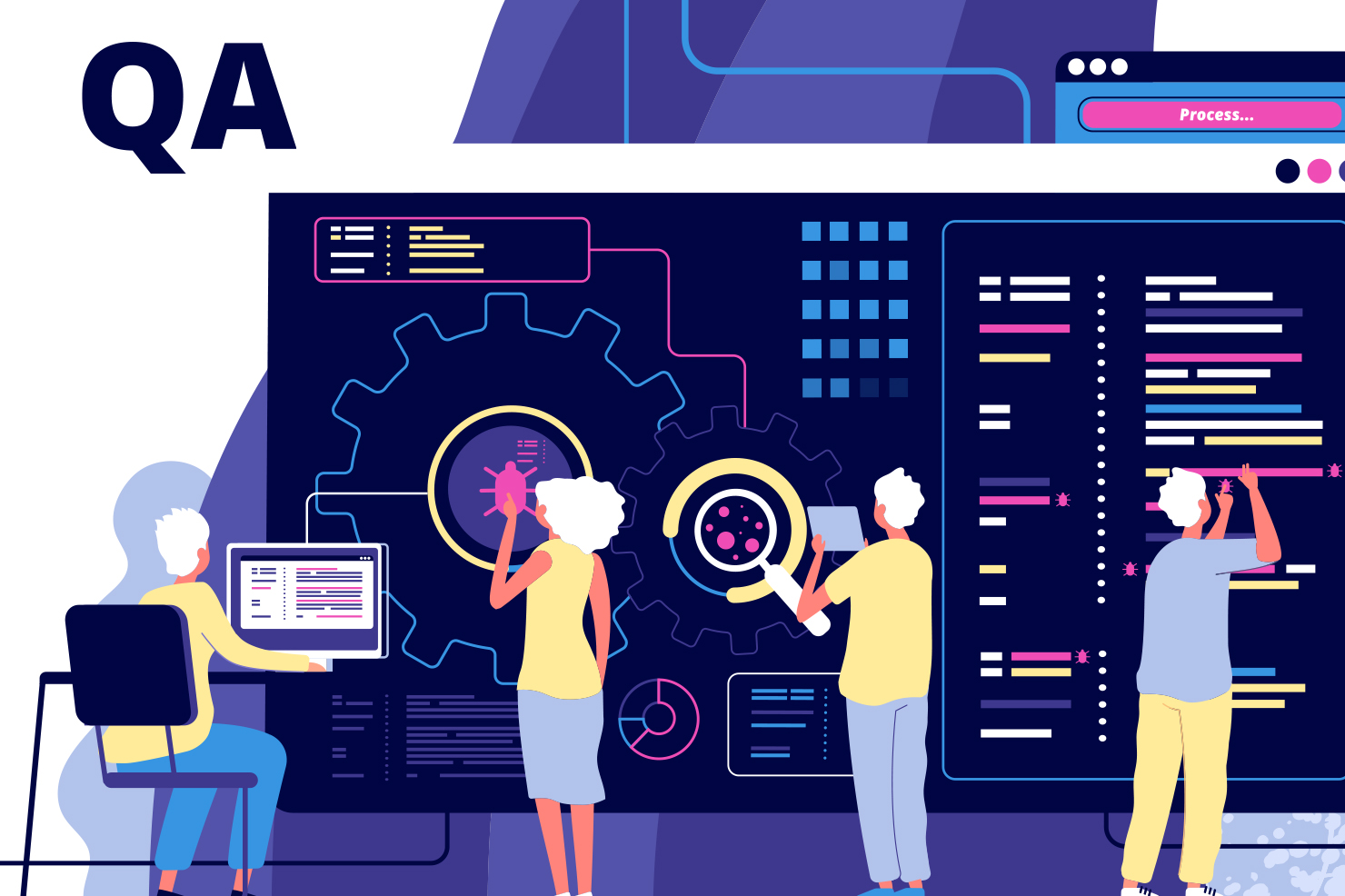
Depending on the product type, manufacturing process, and step of the process being assessed, different approaches to quality measurement are applied. For example, design quality refers to characteristics that designers created for the final product, their appliance, and usefulness. Conformance quality refers to whether design demands are met in the manufacturing process.
Quality assessment thus represents methods of assessing whether the product meets all regulated standards, including standards for every step of the product manufacturing process. In other words, it is a regulatory action in which any occurring defects or mistakes are recognized, so the product manufacturing is optimized to upgrade product quality.
Short History of Quality Assurance
The massive increase in manufacturing, which occurred after the industrial revolution, demanded consistency in product quality. To save old and gain new customers, brands needed to keep up with the market standards and ensure all products were compatible with regulated norms.
Manufacturing has, especially during the 20th century, grown and developed into complex processes (car, clothes, groceries, sanitary products, etc., manufacturing). Complex manufacturing systems demand highly controlled analysis. The need emerged simultaneously as a line of discoveries and theories in statistical data analysis, which offered a better understanding of assessments with more reliability and validity.
Software development, which became the most critical manufacturing process of the modern technological era, was no different. Data needs to be collected and analyzed using statistical approaches such as t-test, z-test, correlation, regression, etc.
Today, software quality assurance refers to the method and process of handling collected data and analyzing and interpreting it, so the conclusions lead to the optimal content upgrade. In this sense, quality assurance becomes a top point and a tool of any quality management since it allows the assessment of customer satisfaction with the product.
So quality assurance was born to regulate mechanical manufacturing processes, but it was adapted and developed further to meet the new market demands with technological advancement.
Software Quality Assurance (QA)
Quality assurance, by definition, is the term used to describe a process of monitoring the manufacturing of a product. That refers to digital and non-digital product types.
Software quality assurance stands for monitoring the methods and processes of software engineering. It is a quality assurance process implemented in software development, conducted to continuously assess the product quality through comparison with predefined goals and quality standards.
Every step the developer goes through in the software development process could contain an error, influencing the final product performance. Therefore, quality Assurance in software development is significant – it is the best way of assessing and regulating the development process. Thus, every development phase is set, and data are collected, analyzed, and compared with high-quality design specifications.
It is a starting point for further web testing, which uncovers bugs and problems within the software. It is also a guideway for software design, integration, configuration management, coding, code reviews, etc. All steps of software development can be conducted to quality assurance since quality regulations for most products are applicable and subjectable to statistical analysis.
Quality Assurance Tasks
The software industry made astounding progress and found its place in almost every aspect of human lives. Most everyday tasks depend on software to make their lives easier for many people. According to some research, SaaS (Software as a Service) takes up one of the highest percentage rates in the current software market and only continues its growth.
Software development has become a supportive pillar of life, making us feel the future is now and making daily life easier for many. Still, what is the price?
Whatever the price, software development reshaped the course of human history, and might event start to influence future human evolutionary development. It follows several essential goals, which provide a pleasant and engaging user experience.
When checking for product quality, software quality assessment consists of several important tasks that Quality Assurance should conduct during a quality assessment process. Missing assignments could result in software failing to meet regulated quality objectives and standards.
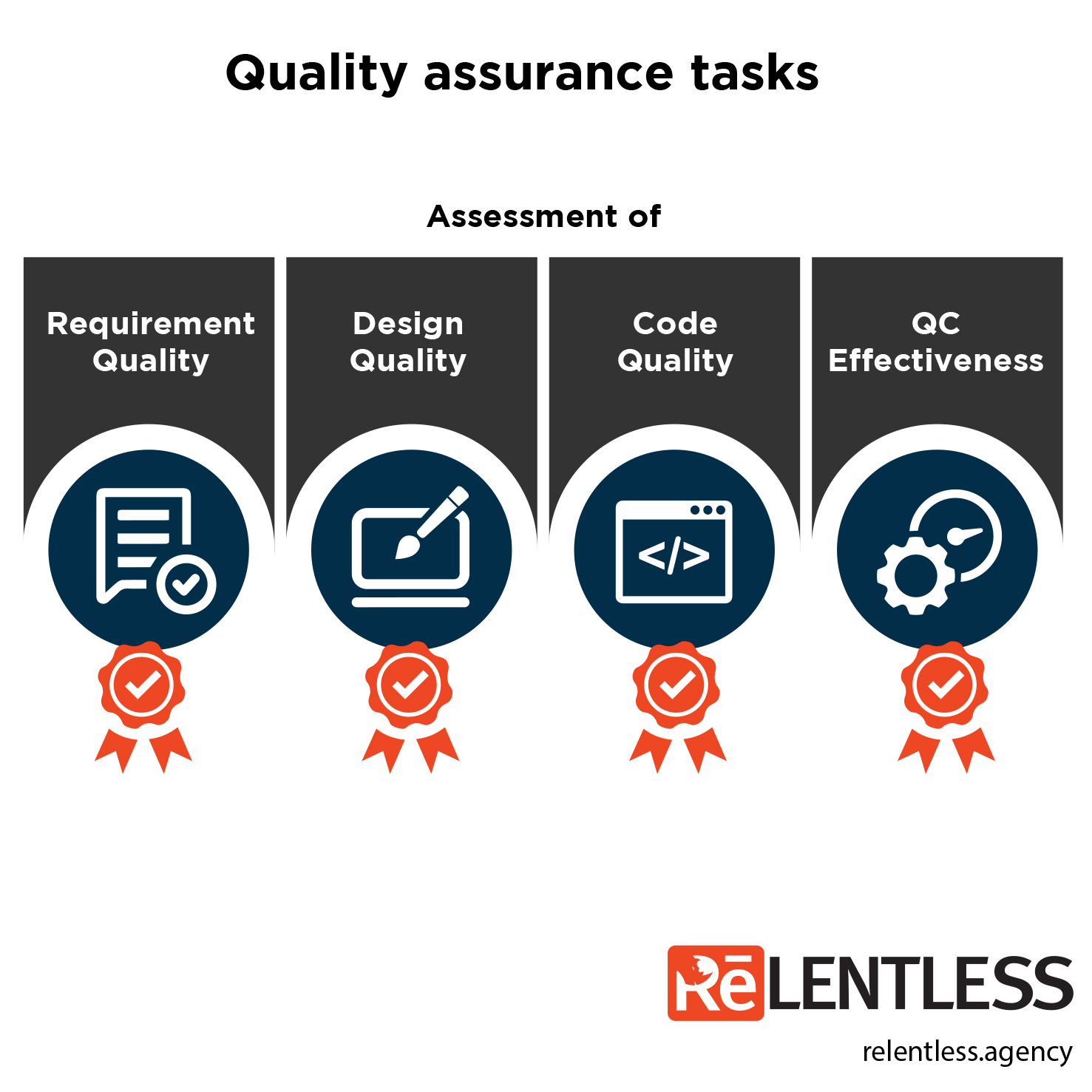
Assessment of requirement quality
This type of assessment provides an insight into the completeness and consistency of the predefined requirements model, which influences the quality of all future development steps and processes. Therefore, model clarity, traceability, and understandability are essential components of overall product quality. Metrics most commonly used for this type of assessment are the number of UML models and errors, number of sections/subsections, ambiguous modifiers, etc.
Assessment of design quality
QA should assess all design elements to determine architectural integrity, pattern and layout consistency, and interface complexity. The most common metrics used for assessment include determinations of architectural model and components that trace back to it, analysis of the complexity of the procedural design, etc. When design quality matches the standard, the product enters the “Quality product” market zone, making it more appealing and desirable to users.
Assessment of code quality
Coding represents the baseline development activity, where ideas come to life. It provides insight into code complexity and reusability while helping with maintenance and data documentation. If the standard criteria are not met, developers can adjust the code accordingly. Commonly used metrics are readability index, cyclomatic complexity, etc.
Assessment of Quality Control effectiveness
This kind of assessment is beneficial in determining software completion rate, reviews, testing effectiveness, and the allocation of resources. It traces errors to their origins and assesses the effort needed to remove issues. This step allows you to see your updates and collect, outline, and compare data from the previous updates to visualize your progress.
Steps of QA
Before you start with quality assurance, it is good to have a plan that will help you keep track of the steps and progress you have made. Since QA is a method of making sure a product is built correctly and accordingly and implemented in various software development steps, it is essential to keep clear and concise stages of the process.
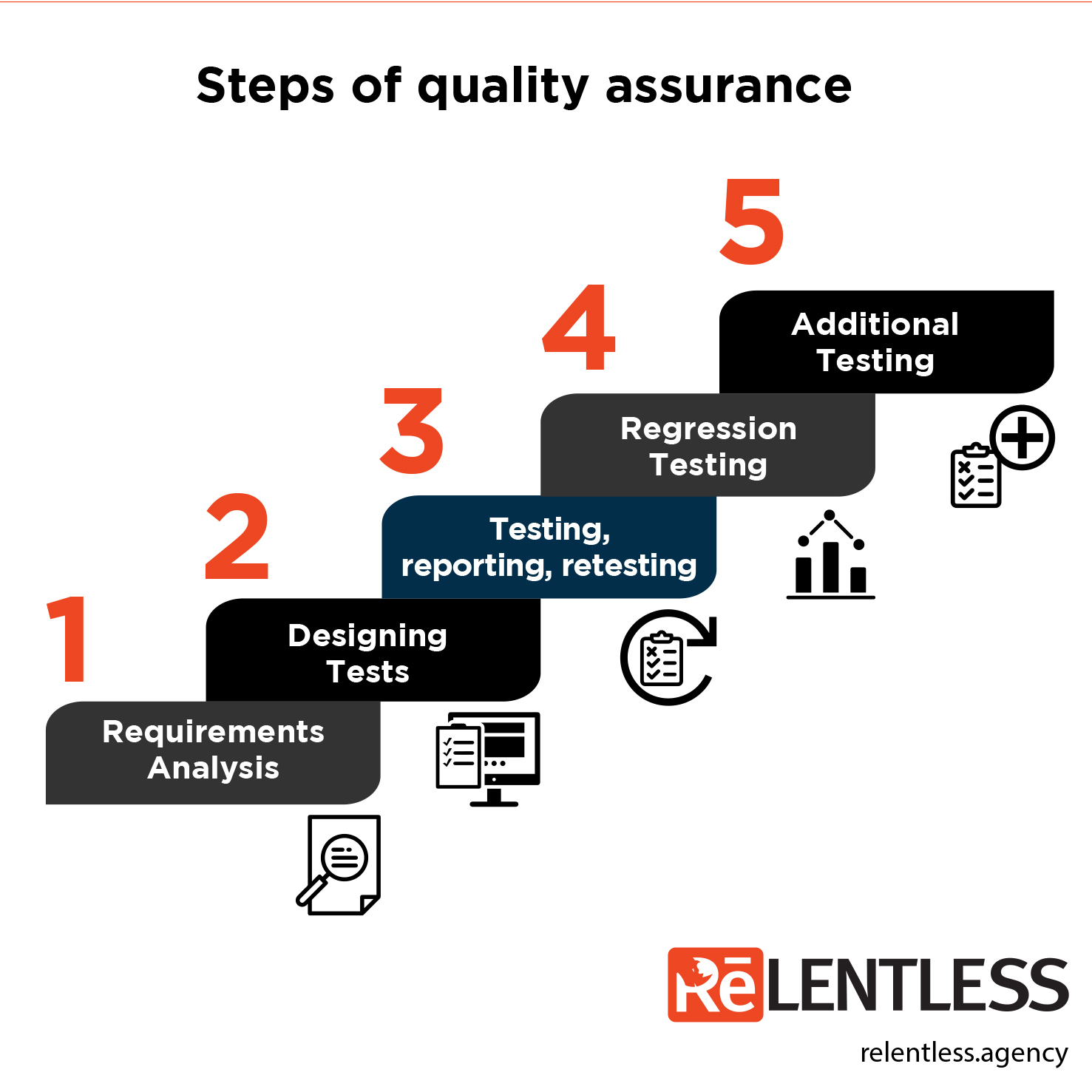
The usual flow of quality assurance goes like this:
Requirements analysis
You will save much more time, energy, and resources to prevent errors and bugs in design requirements. The best way of prevention is through solid requirements assessment, which will cover all the following steps and assure that they are in the correct order and place. QA should set clear, consistent, marked, and traceable requirements based on testing design.
Designing tests
Information you gathered in the first step should be used to plan and determine which test should be conducted later. Then, use the data to create the testing environment by ensuring all network, software, and hardware configurations are correctly functioning.
Testing, reporting, retesting
All proper tests are conducted in this step, and all bugs are detected. Post testing, reports are formulated and checked, so the developers have the idea of additional upgrades that need to be done. After the developing team is done fixing bugs, all tests need to be redone, so the quality of fixes is determined.
Regression testing
This type of testing assures that any previous fixes haven’t affected existing functions or essential information. If other processes are influenced and altered, it could lead to more issues in future development, which would be harder and more expensive to correct.
Additional testing
In the final stages, a few more test needs to be conducted. First, the QA team needs to run “smoke tests” to ensure that each build is stable.
QA/IV&V differences
Since V&V (Verification and Validation) is a process that ensures that software fulfills its purpose, it is easy to understand how people confuse it with Quality assurance. Still, one must remember that the two terms are not the same. V&V represents just one of the steps in a more extensive QA process.
On the other hand, IV&V (Independent Verification and Validation) is the same process as V&V but done independently, not by an original QA team or any other part of the software team. This type of assessment is done when there is a chance that original developers will be biased when checking for Verification and Validation.
QA is a more extensive process of quality assurance and assessment, while V&V is just one of the QA steps. Both methods are done mainly by original QA teams or other developers working on a software project. IV&V is done when there is a slight chance of bias. For example, validation and verification must be conducted objectively in government acquisition, aircraft, or the pharmaceutical industry.
Conclusion
QA is a complex process that requires time and energy, but it is also a crucial step in software development that allows all other measures to run smoothly. For example, it would be much harder and longer to check software quality compatibility without QA. In addition, much more time and effort would have to be spent resolving bugs and errors in the code or any operating processes.
For optimal software performance, hire a team of experts to work in your favor and do all demanding tasks.

